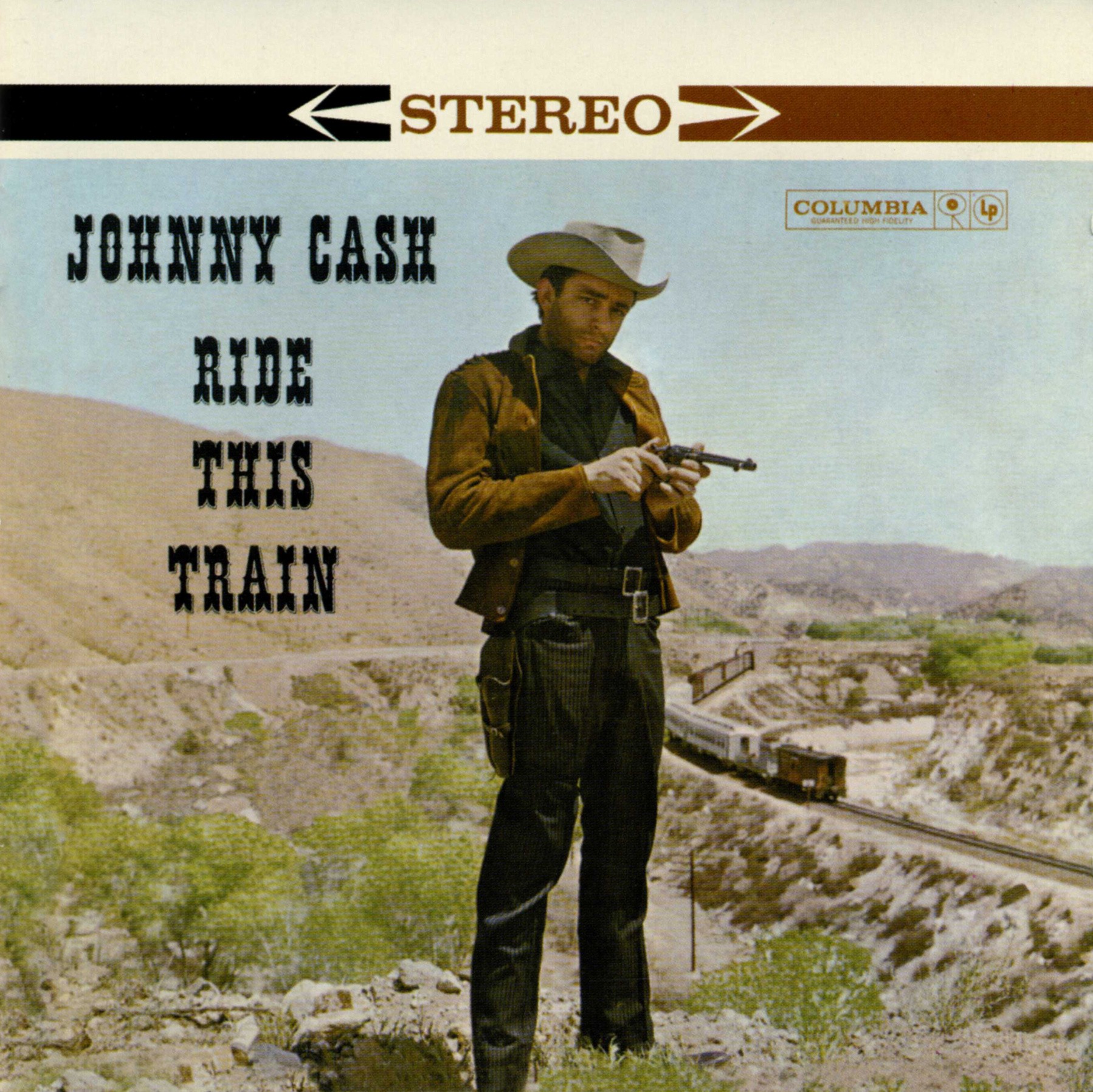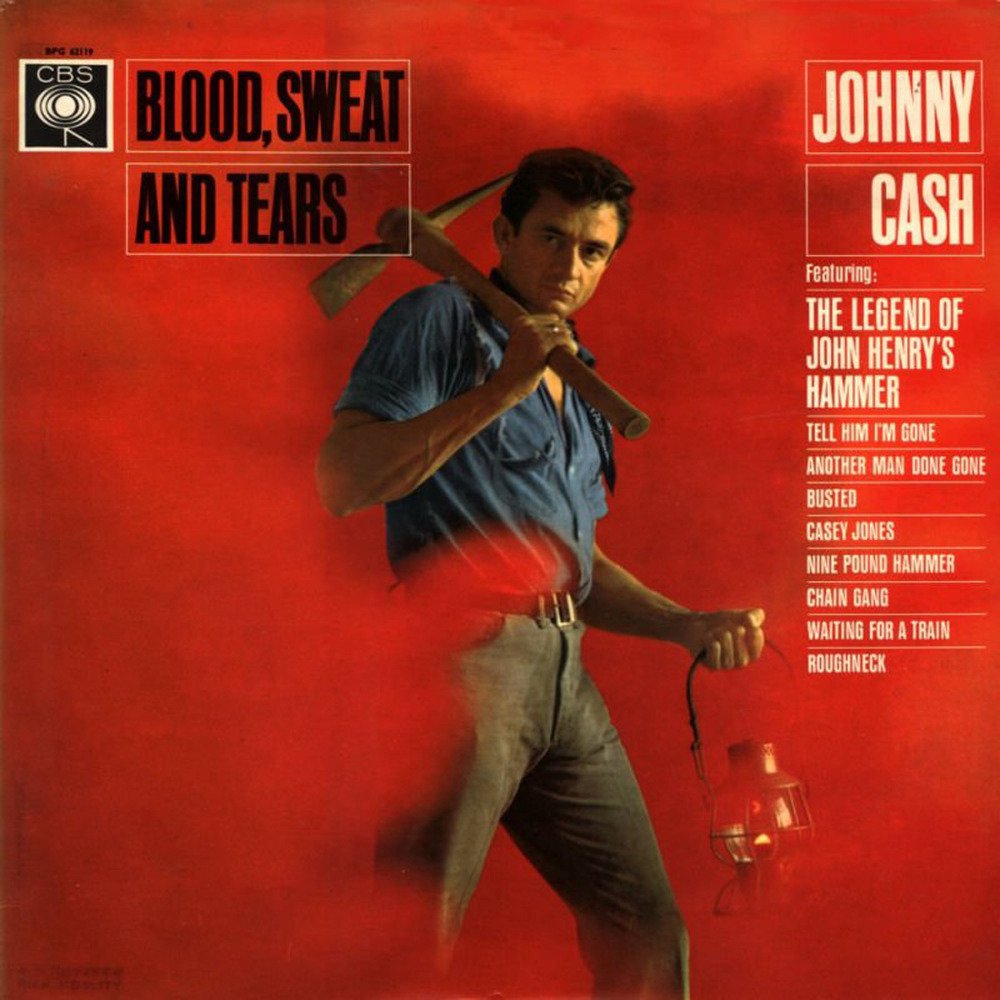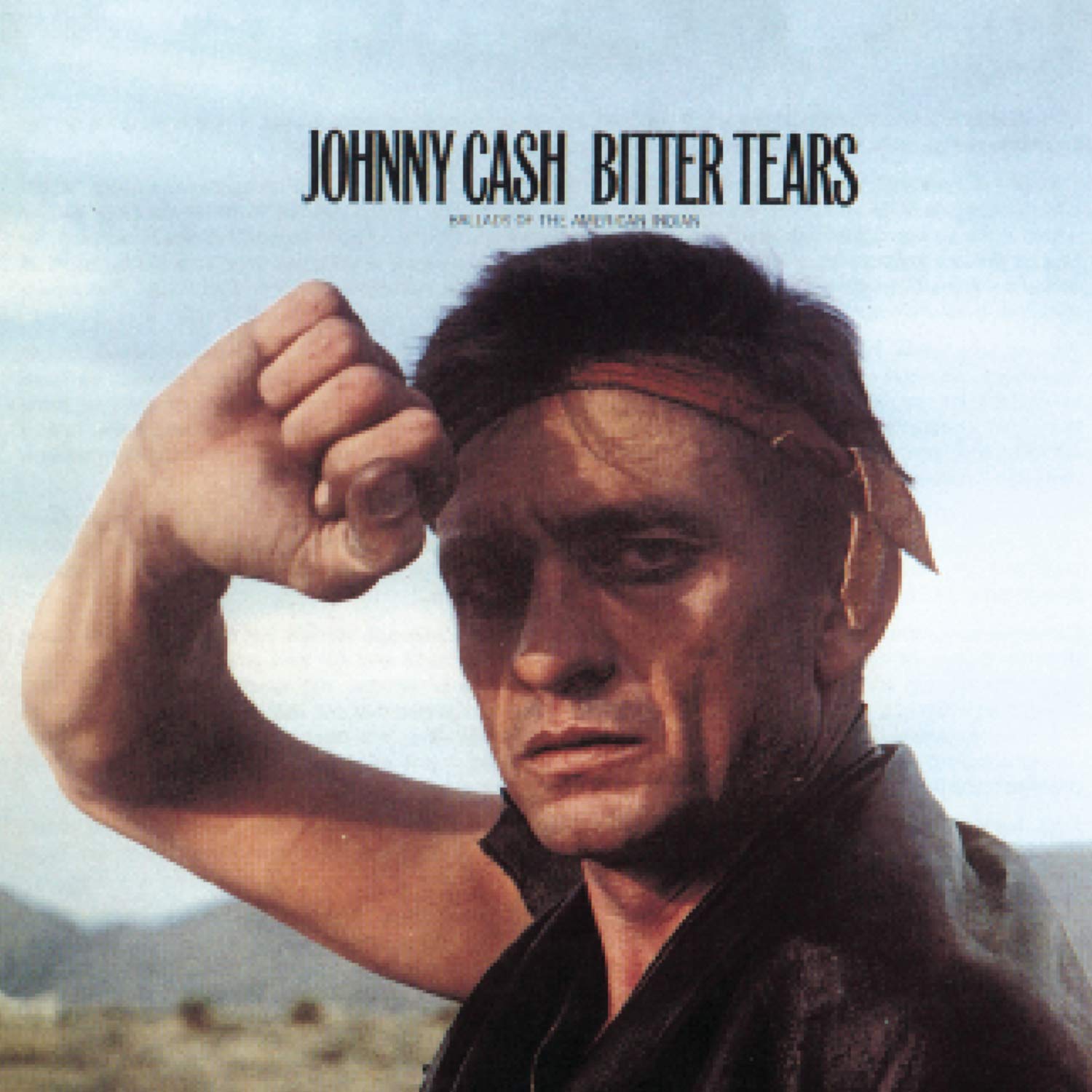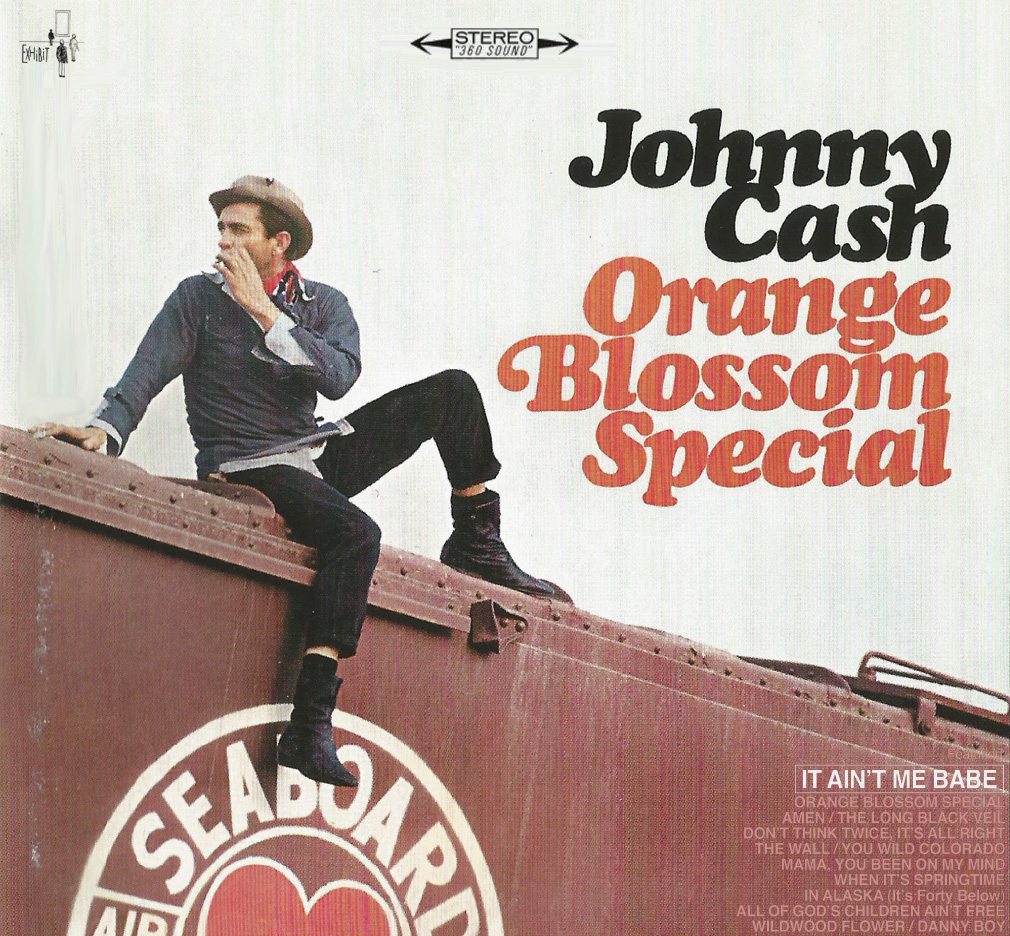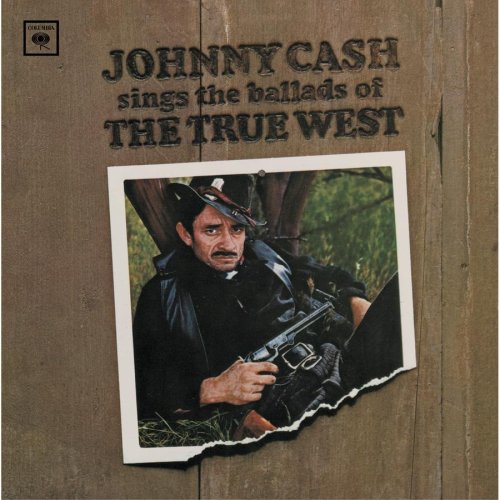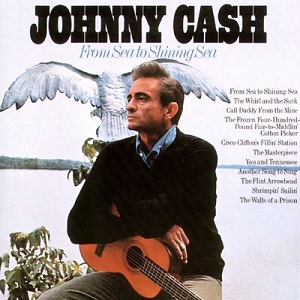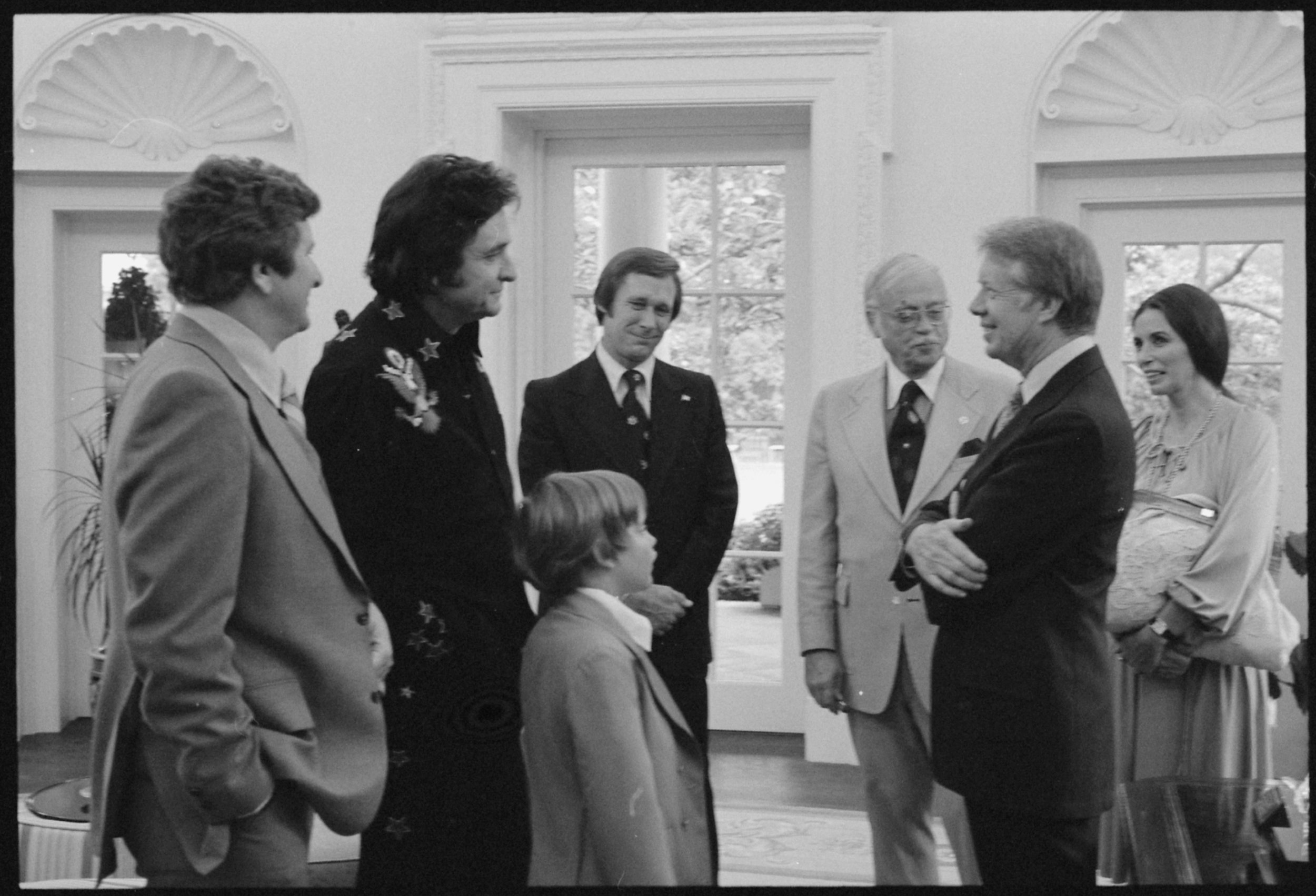Tomorrow will mark the 15th anniversary of Arkansas icon Johnny Cash’s death. Today, we reassess the Man in Black’s career — a life spent wrestling through music with the demons and saviors that haunt almost every Southerner.
Story by John Hayes
t was the summer of 1993, and I was in a record store in Amsterdam one morning, flipping absentmindedly through CDs. I was sleepy but curiously listening to the distorted electronica of U2’s just-released Zooropa album, when a new voice boomed through the speakers.
Wait — that’s … Johnny Cash? On a U2 album?
The crisp, deep baritone was unmistakable. I perked up my ears and heard Cash sing of a strange pilgrimage through a dystopian landscape of soulless cities and anomic, eight-lane highways, driven by dark religious longings.
I went out walking
With a Bible and a gun
The Word of God lay heavy on my heart …
The song, it turned out, was “The Wanderer Starring Johnny Cash,” the enigmatic closing number on Zooropa. In the immediate post-Cold War years of American triumphalism, the U2/Cash song felt like a somber party-crasher.
Fifteen years after his death on September 12, 2003, Cash remains a strange presence. Bohemian college students wear Johnny Cash: The Man in Black T-shirts. A graffiti mural on the side of a building in Memphis depicts him alongside blues icon Robert Johnson, and a record store in Augusta, Georgia, has a poster of a defiant Cash giving the middle finger — amid a window display of hip-hop albums.
PHOTO: HARRY LANGDON/GETTY IMAGES
Any brief assessment of a career that spanned almost 50 years readily risks oversimplification. But it’s safe to say a fundamental part of Cash’s resonance arose from his talent for approaching familiar things from the darker side. He did this with romantic love: In “I Walk the Line,” it sounds like he’s trying to convince himself that he will, indeed, be faithful. In “Ring of Fire,” love seems ominous, dangerous, maybe even lethal. But many country performers have used the idiom of troubled, failed romantic love to articulate the darker side of life.
Instead, more deeply than any of his contemporaries and over a longer span of time, Cash approached the American experience and Christianity from the darker side. He was a Southerner who wrestled publicly with national and religious identity. His music presented the American story from the rough underside and Christian faith from the ragged margins. This wasn’t constant: Cash detoured notably from this in mid-career. But in the last phase of his career he returned to it, solidifying his legacy as a performer who sang of the dignity of ordinary Americans who didn’t win, and of salvation as longed for by lonely sinners.
By the time of his death, as critic Francis Davis noted in his reflective 2004 eulogy in The Atlantic Monthly, Cash had become the sort of American who rarely obtains the spotlight anymore: “a Christian who didn’t cast stones, a patriot who didn’t play the flag card.”
In 2003, when Cash died, that sort of Christianity and patriotism seemed far out of step with the dominant sensibilities in the nation — and perhaps especially in Cash’s native South. In the 2004 election, “evangelical voters” were, in the dominant analysis, the decisive factor in Republican victories. A popular meme depicted a red-state “Jesusland” stretching westward from the South — a solid bloc fervently committed to triumphal evangelical conservatism.
Today, 15 years after Cash’s death, one regularly hears “white evangelicals” are the single most loyal group of Trump supporters. A recent Washington Post article seeks to take the pulse of the pro-Trump “Bible Belt,” and finds it in the First Baptist Church of Luverne, Alabama. There, congregants say Hillary Clinton is “of Satan,” that the Obama presidency “woke a sleeping nation” into seeing its impending peril, and that the Trump presidency involves nothing less than “the survival of the Christian nation.”
The religious politics of these churchgoers are a real part of the South. But they are only a part. In his classic 1953 essay “The Irony of Southern History,” C. Vann Woodward argued that a candid history of the South presented a counterpoint to the “American legend of success and victory.” From a different angle, Flannery O’Connor theorized in a 1962 lecture that Southern history, anchored in the dark blot of the Civil War, was imbued with deeper meaning by the region’s powerful Christianity: Southerners palpably felt their “Fall” and approached modernity with “an inburnt knowledge of human limitations.”
As a child of the impoverished rural South, Cash knew the truths Woodward and O’Connor were articulating, and he sang them into popular culture. The tragic, doleful sensibility through which he sang of Christianity and the national story had — and still has — resonance. It was a sensibility generated out of a genuinely Southern experience and a striking alternative to sweeping assertions about the religious politics of the white South.
It was there in his youth, in songs he composed and sang with a gravitas that seemed beyond his years. On his 1957 hit “Give My Love to Rose” he told of an ex-prisoner who is hoboing trains in a fervent attempt to “see my Rose, and get to know my son,” yet who dies in the railroad yards whispering a plaintive benediction. His 1958 hit “Don’t Take Your Guns to Town” depicted a young cowboy who rejects his mother’s warning, only to have it come back as a haunting epitaph when he is mortally wounded in a gunfight. The steady rise of floodwaters is ominously narrated in his 1959 hit “Five Feet High and Rising,” where a farm family watches helplessly as much of their livelihood is destroyed.
In the 1960s, the story-songs led to a series of concept albums that presented a panoramic vision of the American past. On Ride This Train (1960), Blood, Sweat and Tears (1963), Bitter Tears (1964), Orange Blossom Special (1965), Ballads of the True West (1965), and From Sea to Shining Sea (1968), Cash took the listener on journeys to obscure places with forgotten people. On Ride This Train and Ballads of the True West, the travel frame was overt: Cash’s spoken-word narration between songs wove them together into circuitous tours with Cash as the trusted guide. The packaging of the albums accentuated the journey-into-the-past motif. Cash appeared on the covers dressed as one of the types he was singing about: a gunslinging outlaw, a miner with pick and lantern, a somber Indian, a hobo riding the rails, a hardened cowboy. And his voice, deepened since his early days at Sun Records in the mid-’50s, imbued the stories he sang with a stark, unsentimental seriousness.
These albums didn’t typically generate hit singles, but they charted high and firmly established Cash as a major figure in country music. And they were coherent works of art, with a clear vision behind them. In his 1997 memoir, Cash wrote that they were “some of the work I’m most proud of today,” that “they brought out voices that weren’t commonly heard at the time — voices that were ignored or even suppressed. … I was trying to get at the reality behind some of our country’s history.”
It was a history peopled by coal miners, convicts, and cowboys, railroad workers, lumberjacks, and sharecroppers, Indians, hoboes, and, outlaws. And their stories were of struggle, strife, and defeat. The railroad worker John Henry dramatically beats the new machine but dies in the process. The Pima Indian Ira Hayes fights nobly for his country but dies forgotten in a reservation ditch. The prisoner in “The Wall” is memorialized by his fellow prisoners for the escape attempt he knows will mean his demise. And the cowboy in “The Blizzard” tries his mightiest to save his horse, but they both ultimately perish “just a hundred yards” from home.
The “ordinary” people in these story-songs are heroic: Their hard, desperate struggles and human longings have dignity and honor. But they don’t win. Cash honors them and puts their stories at the center of the national experience, but there is no victory celebration. The rough reality is heroic defeat, not the American dream.
The tragic tone of such songs fit naturally on the live album Cash persuaded his record company to sanction. The resulting At Folsom Prison (1968) charted No. 1 and propelled him to the zenith of his career. It was followed by four more No. 1 albums in the subsequent three years, and it gave him broad visibility outside country music. On his network TV Johnny Cash Show (1969-1971), with its “Come Along and Ride This Train” segment and Cash dressed in archaic suits, a mass audience could follow his story-songs into the American past.
Johnny Cash performing at Folsom Prison on January 13, 1968
In national press coverage unusual for a country performer of that era, Cash appeared as a figure from a rough, faded past, yet with unexpected resonance among the counterculture.
One journalist noted “American Gothics in bib overalls and dirty-footed hippies … jammed together” at a Cash concert.
Another described him as “Tom Joad on the run … one of Woody Guthrie’s bunch.”
Still another saw him as a “complex spirit” who sang “bitter protest songs” while “pac[ing] his show like a backwoods revival … a towering circuit rider selling salvation.”
This last comment hints at the distinct religious expression Cash had also been crafting. It took some time to get to this: Cash’s early efforts were pigeonholed into a discrete “gospel” genre — Hymns by Johnny Cash (1959) and Hymns From the Heart (1962). Their feel was sentimental and nostalgic. (A later attempt, 1969’s The Holy Land, took the concept-album travel approach and sold well on the coattails of At Folsom Prison, but felt like a removed journey to first century Palestine).
Cash more fully brought the doleful spirit of his story-songs to religious expression on two songs he recorded with the Carter Family in 1962 — the spiritual “Were You There When They Crucified My Lord” and the gospel song “Peace in the Valley.” Both songs, performed in masterful antiphonal style with the crisp alto of Anita Carter, conveyed longing born of penitence and loneliness.
In “Were You There,” Cash and the Carters are self-implicating witnesses to Jesus’ execution, meditating on a recurrent lament: “Oh-oh, sometimes, it causes me to tremble, tremble, tremble…” In “Peace in the Valley” Cash is a weary, lonely traveler, sustained only by the hope of a transformation that feels so distant, to be “changed, changed from this creature, that I am, oh yes.” Both songs appeared on a 1963 compilation album, the No. 1 Ring of Fire: The Best of Johnny Cash, and they became staples of Cash’s live performances in the ’60s. Sung alongside his secular songs, these religious songs appeared not as discrete, pious detours, but as Christian longing suffused with sorrow, spiritual expression kin to the tragic tone of the story-songs.
But it was on the title song of his 1971 No. 1 album Man in Black where Cash achieved his most creative religious expression, at least for the next several decades. Cash had often (though not uniformly) dressed in stark black suits for his performances. In early 1971, ruminating on the social foment of the era and on his heightened visibility in the public eye, he composed a song that gave meaning to his austere clothes and created a persona that would endure.
In the song, Cash described how he wore black for people on the margins: for “the poor and the beaten-down,” for “the sick and lonely old,” for drug addicts, prisoners, and young soldiers dying in Vietnam. It was for these neglected ones, for people who were suffering in a prosperous society, that he wore clothes of mourning. He was clad like an old country preacher to hold an unsparing mirror up to the nation. It was arresting symbolism undergirded by a doleful Christianity: the “Man in Black” was a contemporary iteration of the late medieval “Man of Sorrows” image of Christ.
But one could see the Man in Black as a democratic hero of the downtrodden and miss the Christian symbolism; this was an indirect religious expression.
Indeed, the much more apparent religious expression on the Man in Black album was the opening song, an awkward duet with Billy Graham called “The Preacher Said, ‘Jesus Said.’” The duet heralded a new phase of Cash’s life, his eager participation in the evangelical movement.
The evangelical movement had coalesced in the mid-1940s, and by the early ’70s was in a phase of rapid expansion. Cash became a fervent evangelical through a friendship he developed with Billy Graham and through his involvement with Nashville’s Evangel Temple.
Cash was soon a regular performer at the large rallies held by Graham and other evangelists. He framed his 1975 autobiography Man in Black as an evangelical testimony, and was Youth for Christ’s “Man of the Year” in 1979 for his double-album A Believer Sings the Truth.
The 1973 book The New Johnny Cash celebrated his newfound identity, the evangelical publisher of Man in Black billed him as “God’s superstar,” and a 1976 Spire Christian Comic depicted his life as a model of evangelical transformation.
Dovetailing with this new evangelical involvement was an assertive patriotism. It was first obvious on a 1972 album that, while full of story-songs like his ’60s albums, framed them in a celebratory manner: America: A 200-Year Salute in Story and Song. Two years later, Cash furthered the triumphal spirit with his post-Watergate composition “Ragged Old Flag.”
In her own good land here, she’s been abused
She’s been burned, dishonored, denied, and refused
But she’s in good shape, for the shape she’s in
’Cause she’s been through the fire before.
For America’s bicentennial in 1976, he wrote “Sold Out of Flagpoles,” and his ebullient patriotism won him a prestigious spot as grand marshal for the capital’s Independence Day parade. Cash described his briefly revived New Johnny Cash Show of ’76 as “all-American, God bless mama and daddy” in feel, while an acerbic critic found Cash “offensively pious” and the bicentennial single “an absurd mess of godly patriotism.”
President Jimmy Carter with Johnny Cash and family, June 14, 1977.
Cash’s new tone was triumphant. The heroic defeats of the story-songs, their tragic sense of the national experience, had given way to the heroism of a besieged but enduring nation. And evangelical Christianity promised unilateral victory over the old life of sin: “I felt brand-new, born again,” Cash wrote in Man in Black of his initiation into Evangel Temple.
In this new phase, Cash had become significantly more mainstream. He seemed to be riding along happily on the wave of rising trends. Though other country performers participated in this — most notably Merle Haggard with his defiantly patriotic “The Fightin’ Side of Me” (1970) and Loretta Lynn with her concerned God Bless America Again (1972) — Cash dove more deeply into both the evangelical movement and assertive post-’60s patriotism than any of his peers.
This involvement coincided with newfound stability and sobriety in his personal life: at least for a time, he overcame severe drug addiction and became a devoted husband and father. But if Cash as a performer was calculating how the public would receive this celebratory patriotism and evangelical triumph, he was severely amiss: It just wasn’t that popular with his core audience of country fans, nor with the popular audience he’d gained with Folsom.
Beginning in 1973 and continuing for two decades, Cash’s album sales and hit singles dried up almost entirely, despite regular new releases (sometimes two albums a year), occasional but ignored gems, and constant touring. Cash appeared as a living legend, admired for work he’d done in the past, but no longer looked to for artistic creativity in the present. In the view of his most careful biographer and of many close to him, Cash had lost his muse. The hunger that had made him such a compelling artist had abated, and he was floating on the stature he’d established in his hungry years.
In this long dry spell, Cash thought about recording a highly personal album, a collection of songs he would sing to himself in his most solitary moments. He’d be accompanied only by his own acoustic guitar, and it would be called Late and Alone. The idea languished for years — until 1993.
Only a few weeks after U2 invited Cash to sing “The Wanderer,” an even more unlikely invitation arrived from rap and heavy metal producer Rick Rubin. Rubin had followed Cash’s music, was fascinated by his “divided” persona, and saw him as a major artist whose creativity had stagnated. The invitation snowballed into extended recording sessions that stretched across nine months. Cash had never spent so much time recording an album. The best fruits of these sessions, whittled down to 13 memorable songs, were released in 1994 as American Recordings.
It was immediately hailed as an artistic triumph.
Johnny Cash and Rick Rubin during the American Recordings sessions.
The tragic, doleful Cash had returned. On his own compositions and covers, he sang of a cold-blooded killer haunted by his deeds, a convict known only by the number tattooed on his neck, an aging Vietnam veteran trying to forget the awful things he’d seen, a wild rambler amazed he was still alive, and a dying young cowboy pleading for proper burial but discarded instead in a shallow grave. Celebratory patriotism had subsided, and Cash was again giving voice to stories from the rougher, uglier edges of the national experience.
And in the religious songs — more successfully woven into the artistic whole than on any Cash album before — salvation didn’t belong to the upright and pious. It was for the broken-down and bereft, who achieved it through loneliness and lament. Cash sang of a mystical salvation train with seats for egregious sinners like Judas Iscariot and John Wilkes Booth. He voiced plaintive prayers for God to “help the beast in me” and of “Lord help me, Jesus, I’ve wasted it so.” And, in the spirit of “Were You There,” he meditated on Jesus’ cross as a “tree of life” with sustaining fruit to fend off lures from “my old friend Lucifer.”
The album cover depicted Cash as the austere Man in Black against a clouded sky, and its title (at first glance merely the new name of Rubin's label, American Recordings) played on deeper associations of Cash as a chronicler of the underside of the national experience.
American Recordings breathed new life into Cash’s career and set the tone for a strong series of albums that followed: Unchained (1996), Solitary Man (2000), The Man Comes Around (2002), and the posthumously-released A Hundred Highways (2006) and Ain’t No Grave (2010). The popularity of these albums increased in succession, with The Man Comes Around certified gold shortly after its release, and A Hundred Highways soaring to #1 on the Country and Pop charts, a feat matched only by 1969’s At San Quentin. And Cash’s last single, “Hurt” (released in spring 2003) became the best-selling single of his entire lengthy career. In his last years and after his death, Cash’s music came full circle and found resonance it had not enjoyed since his late-’60s/early-’70s zenith.
Johnny cash, carl perkins, and tom petty during the Unchained sessions.
But it also came full circle more profoundly: Cash as a creative artist had recovered his muse. Tragic stories of the national experience and doleful longings for Christian salvation energized him; it was on these that his particular talents shone. Cash wasn’t so much taking focused journeys into the national past as he had on the ’60s albums, but drawing from many song types from past and present to assemble a memorable American songbook of the darker side of life. Likewise, the assemblage of religious songs from varied sources presented a somber Christianity that, woven together with the secular songs, gave deeper meaning to both.
This was most evident in the two lead songs of The Man Comes Around album: the title song and “Hurt.” Buoyed by his resurgence, Cash drew on old material — the personified-Death folk song “Man Goin’ Round” and Blind Willie Johnson’s stark 1920s “John the Revelator” — to compose a mystical song about the end of the world. He sang as the John of Revelation, the imprisoned prophet who had a series of richly symbolic, terrifying visions. “The Man” was Christ, and his “com[ing] around” was his return as the world’s true king, overturning the familiar and sending established patterns into frightening disarray. The staccato guitar and pounding piano accentuated the coming revolution, and with his now aged, weakened voice, Cash seemed a fearful witness. It was a magisterial, singular song, and it could not have been further from the national mood in the early post-9/11 years: Instead of confidence in a God-blessed USA or evangelical personal triumph, it presented cosmic cataclysm wrapped in awe and wonder.
Complementing this was the remarkable video for Cash’s cover of “Hurt.” The original plan for an L.A. studio shoot had to be scrapped due to Cash’s declining health, and director Mark Romanek’s crew filmed during a short window of time at Cash’s house in Tennessee and at the defunct House of Cash museum nearby. The imagery the video presented was jarring and poignant: the ephemera of fame broken and discarded at the museum, varied glimpses of Cash over the course of his long career, and the man himself staring somberly into the camera, badly aged, confessional, and tearful. Romanek wove the material into an arresting whole to evoke a key part of Cash’s persona. He’d sung many memorable songs that punctured myths of the American past with tales of tragic defeat; now, Cash himself was the subject of the tale, and celebrity and success were the myths being demolished by an anguished awareness of mortality and guilt.
As lead songs on his last album, “The Man Comes Around” and “Hurt” were in constant replay in the weeks and months after Cash’s death. They were fitting epitaphs to his long and circuitous career, for Cash had returned to the ethos that made him thrive.
Mark Romanek's video for Cash's cover of the Nine Inch Nails song, “Hurt”
Amid the tributes and eulogies in the wake of his death, evangelicals and triumphal patriots sought to claim Cash as one of their own. The flag-waving, cheerfully evangelical years were undoubtedly real parts of Cash’s biography. But they didn’t produce lasting music. Rather, Cash’s musical legacy was the one he forged in his early years, and to which he returned in his later years. He thrived as an artist and had resonance as a performer when he sang from the darker side of life.
If deflating the “American legend of success and victory” and confessing one’s “Fall” and “human limitations” are basic elements of our regional identity, then Cash in his later years was returning to the wellsprings of his own Southernness. He was recovering not only the sensibility that made him artistically thrive, but also an intrinsic part of his own identity as the child of an older, impoverished rural South.
Today, 15 years after his death, the white South can sound like a regional chorus of mobilized evangelical nationalists. But Cash’s distinctive, enduring baritone never stops reminding us that on matters of national identity and Christianity, Southerners speak with more than one voice.
John Hayes is an associate professor of history at Augusta University. He is the author of Hard, Hard Religion: Interracial Faith in the Poor South (UNC Press, 2017). Header photo: Andy Earl






